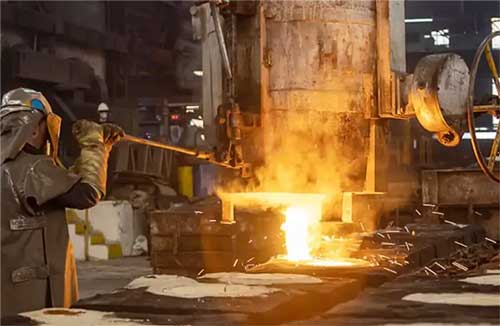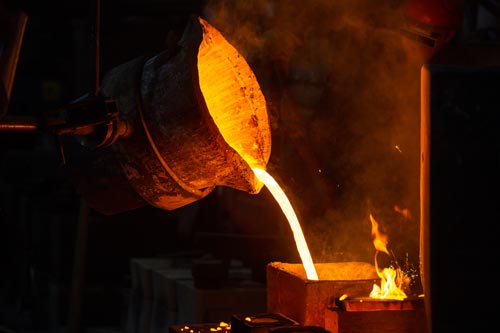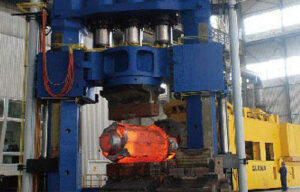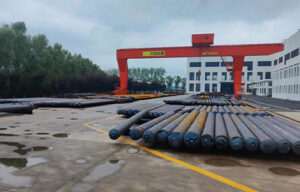Welcome to My Blog!
Before we dive into the content, I’d love for you to join me on my social media platforms where I share more insights, engage with the community, and post updates. Here’s how you can connect with me:
Facebook:https://www.facebook.com/profile.php?id=100090797846538
Now, let’s get started on our journey together. I hope you find the content here insightful, engaging, and valuable.
Table of Contents
Introduction

The steel plate is a versatile and essential material in various industries, renowned for its durability, adaptability, and strength. Its applications range from construction to manufacturing, making it a staple choice for engineers and designers alike. This blog delves into the numerous advantages of using the steel plate and how it enhances various projects.
Strength and Durability of The Steel Sheet
One of the most significant benefits of the steel sheet is its unparalleled strength. The material is capable of withstanding extreme pressures, heavy loads, and harsh environmental conditions. This makes it ideal for constructing bridges, skyscrapers, and industrial machinery. Additionally, the steel sheet resists wear and tear, ensuring that structures remain safe and reliable over time.
Applications That Showcase Durability
- Construction of reinforced buildings
- Manufacturing heavy-duty machinery
- Fabrication of ship hulls and offshore platforms
Versatility of The Steel Sheet
Another powerful advantage is its adaptability to different applications. The steel sheet can be customized to various thicknesses, sizes, and grades, catering to specific project requirements. Whether for automotive parts or decorative architectural designs, its flexibility ensures it fits diverse needs effortlessly.
Common Industries Utilizing The Steel Sheet

- Automotive: Frames, panels, and reinforcements
- Energy: Wind turbine components and oil rigs
- Aerospace: Structural parts and support frameworks
Table: Comparison of Steel Sheet Grades and Uses
| Steel Plate Grade | Common Uses | Advantages |
|---|---|---|
| A36 | Structural building projects | High strength and weldability |
| 304 Stainless Steel | Food and medical equipment | Corrosion resistance and hygiene |
| Hardox 400 | Mining and construction tools | Exceptional hardness and wear resistance |
| AR500 | Ballistic and protective plates | Superior impact resistance |
| S275JR | General engineering works | Cost-effective and versatile |
Cost-Effectiveness of Using The Steel Sheet

Despite its robustness and versatility, the steel plate is remarkably cost-effective. Its long lifespan minimizes the need for frequent replacements, translating to significant savings over time. Additionally, its recyclability contributes to sustainability, reducing environmental impact and waste.
Sustainability as a Cost-Saving Measure
Recycling the steel plate reduces raw material expenses while promoting eco-friendly practices. This makes it a preferred choice for industries seeking to balance performance and environmental responsibility.
Ease of Fabrication and Maintenance
The steel plate’s ease of fabrication adds to its appeal. It can be cut, welded, and shaped with precision, accommodating complex designs and structures. Furthermore, its low maintenance requirements make it a practical option for long-term use.
Maintenance Tips for Longevity
- Regular cleaning to prevent surface corrosion
- Applying protective coatings in harsh environments
- Periodic inspections to identify and address wear
Conclusion

The steel plate continues to play a pivotal role across industries due to its unmatched strength, adaptability, and cost-effectiveness. Its ability to deliver high performance while being sustainable ensures its relevance in modern engineering and design. From massive construction projects to intricate manufacturing needs, the steel plate is an irreplaceable asset.
FAQ
What are the most common types of steel plates?
The most common types include carbon steel plates, stainless steel plates, and alloy steel plates. Each type has unique properties suited to specific applications.
Can the steel plate be customized for specific projects?
Yes, the steel plate can be tailored in terms of thickness, grade, and size to meet project-specific requirements.
How does the steel plate contribute to sustainability?
The steel plate is recyclable, which reduces waste and supports environmentally friendly practices in industries.
What industries benefit the most from using the steel plate?
Industries such as construction, automotive, aerospace, and energy benefit significantly due to the steel plate’s strength, durability, and versatility.
Are there limitations to using the steel plate?
While the steel plate offers numerous advantages, its weight and susceptibility to rust (in unprotected forms) can be drawbacks in certain scenarios. Proper selection and treatment can mitigate these limitations.

